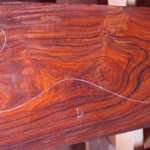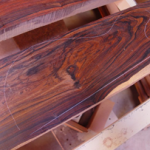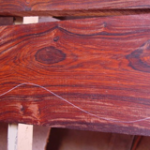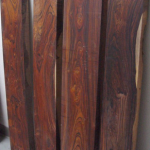
Besides music, another thing that Jack really admired was fine woodworking. Although no carpenter, the house I grew up in has little masterpieces of Dad’s handiwork throughout. There are beams and window casings, all expertly cut, finished, and stained… the closets he made in the bedroom I grew up in are perfect examples of the attention to detail and quality craftsmanship that Dad so admired. When I was a bit older, the toy closet was transformed into a beautiful stereo cabinet, complete with in-wall connections for remote speakers, power dressings, tasteful lighting, and an ingenious (for the 1980s) method for redirecting IR remote commands over coaxial cable so I didn’t have to get up and go to the closet when I was in my body cast.
In fact, to this day, I still haven’t met anyone that could speak with such fluency and authority on topics like electronics, technology and technical design, sound quality, etc. Dad’s other great influence on me is my love and interest in audio, technical design, and a permanent child-like wonder about how things work.
There are many luthiers out there that can help a musician realize a dream. For me, though, there is only one group of people that so perfectly personify so many things that remind me of Dad – the kind people at Alembic.
WHO IS ALEMBIC?
First of all, I STRONGLY urge you to read Alembic family history. If you knew my father, it will be immediately apparent how fitting (on so many levels) it was to choose them.
Ron Wickersham and his wife Susan started Alembic in the late 1960s. Ron was an electronics wizard at Ampex, and engineered several Grateful Dead albums, such as ‘Aoxomoxoa’ (where he designed the first multi-track mixing console for studios that used the new Ampex 16-track recorder and ‘Live Dead’ (where he pioneered techniques for live rock concert recording still used today). After working with the Dead to improve the sound of their live shows, it was discovered that their instruments were the weakest link in the signal path. That’s when Alembic started retrofitting existing instruments, and eventually building high quality instruments of their own. They had transformed themselves from sound and recording specialists to instrument makers. An interesting side project of Ron’s was helping to develop the ‘Wall Of Sound’ and feedback-canceling vocal microphone design that brought the Dead’s live PA quality leaps and bounds beyond what was conventionally available.
Susan Wickersham is an accomplished artist – and among many other great things, a master inlay artist. Doug Irwin apprenticed under her. Doug was know mostly for designing Tiger, Wolf, and Rosebud, Jerry Garcia’s three most identifiable guitars.
As things usually go with Alembic, Ron is designing the electronics for my guitar, while Susan (and her daughter, Mica) will be working with me on the actual construction and ornamentation of the instrument. Susan and Mica have already forgotten more than you or I will ever know about wood selection and guitar making!
It is truly inspiring and humbling to be working with a team that has contributed so much to instrument design, live sound reinforcement, and location concert recording.
I like to think that Dad would be happy to know that the same people that built instruments for so many of the musicians he loved were now building one for his son.






